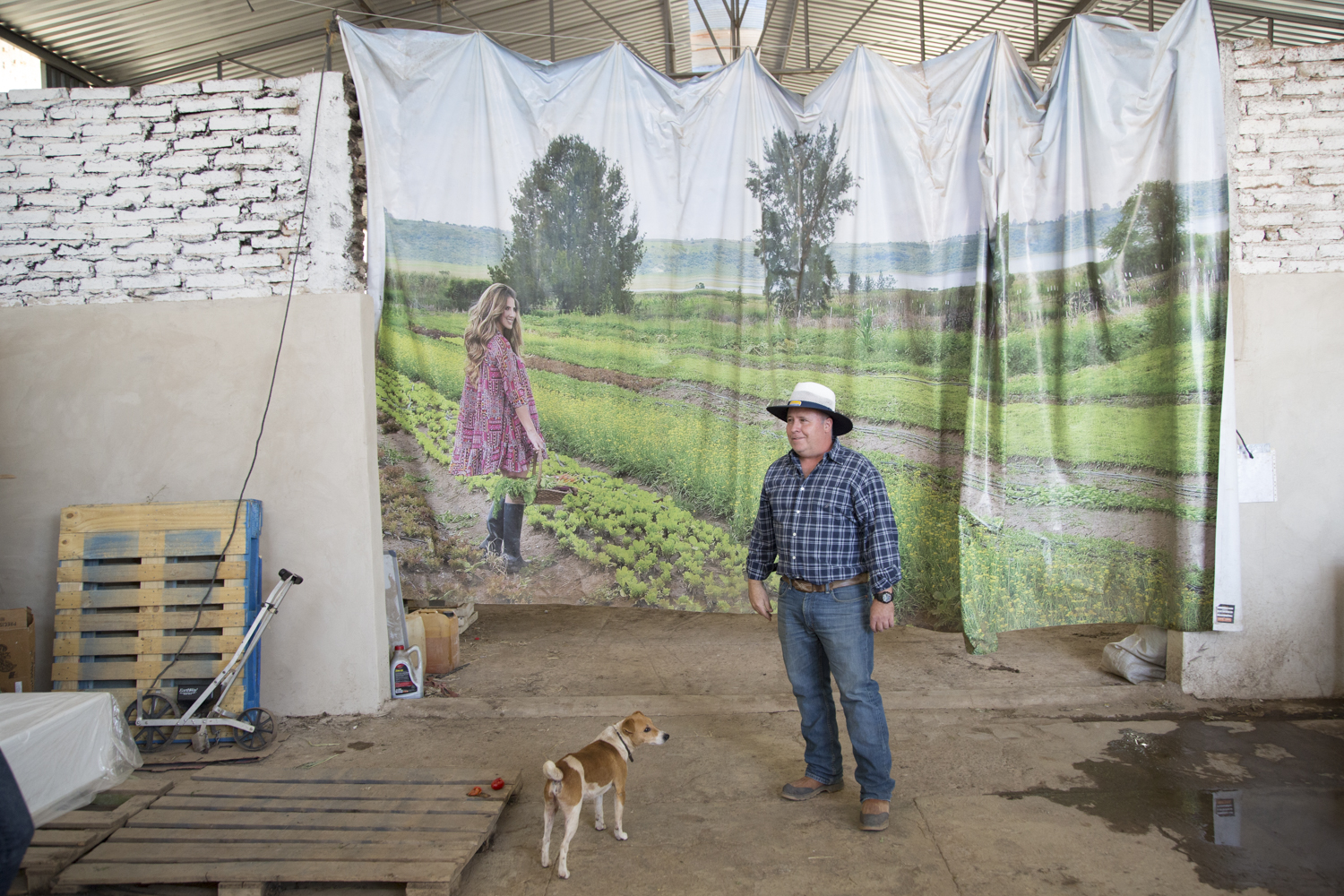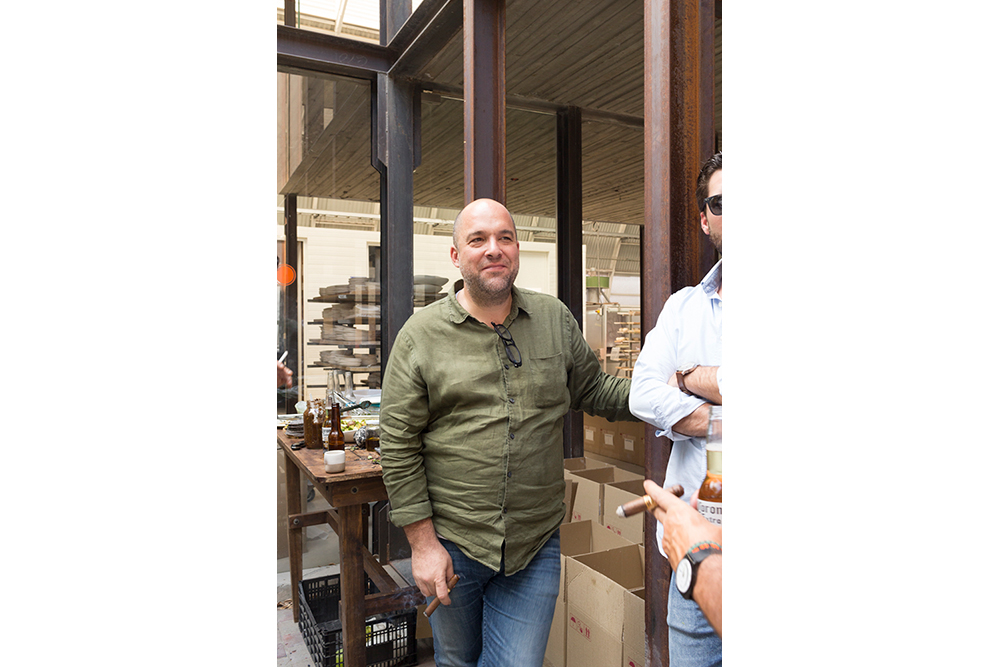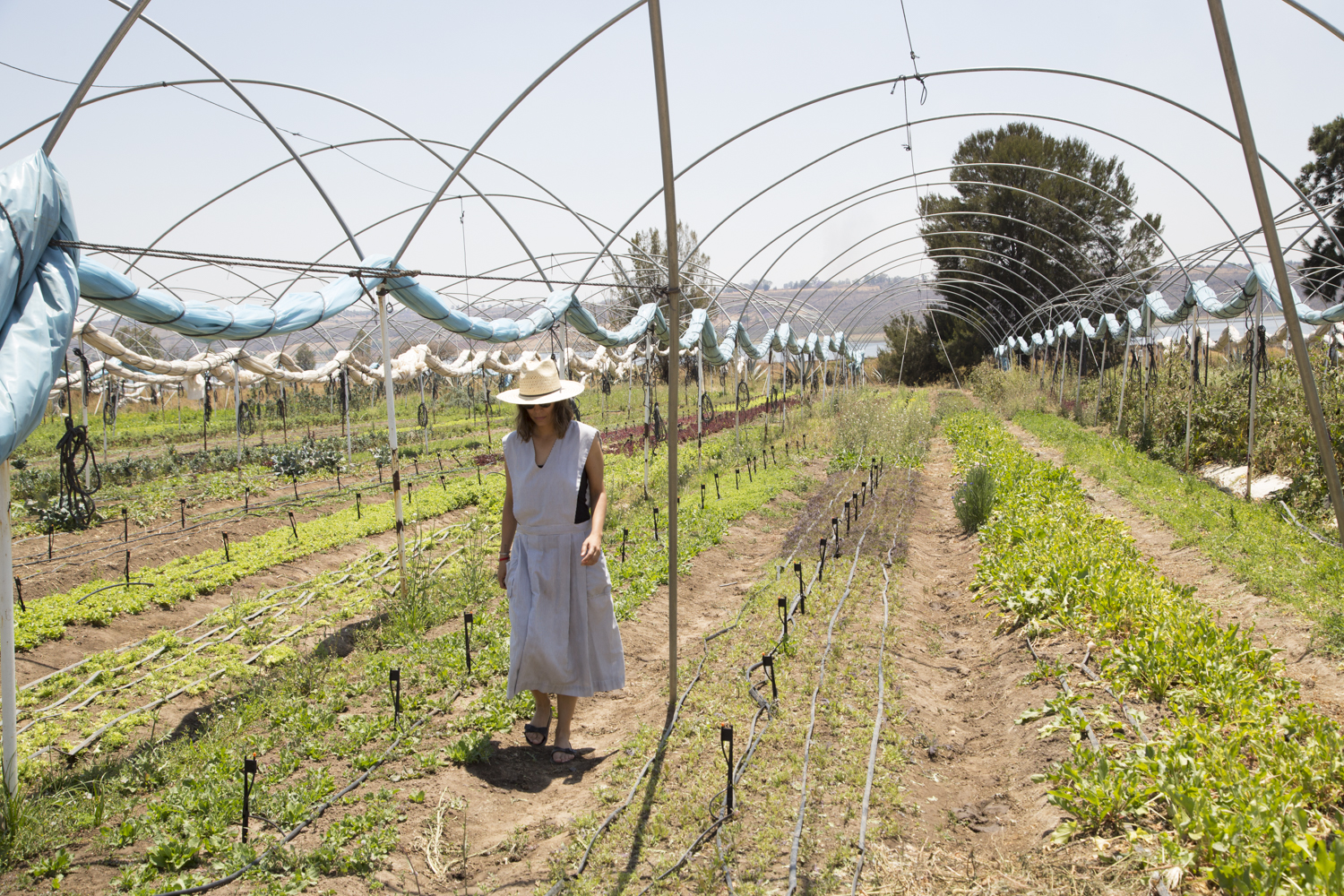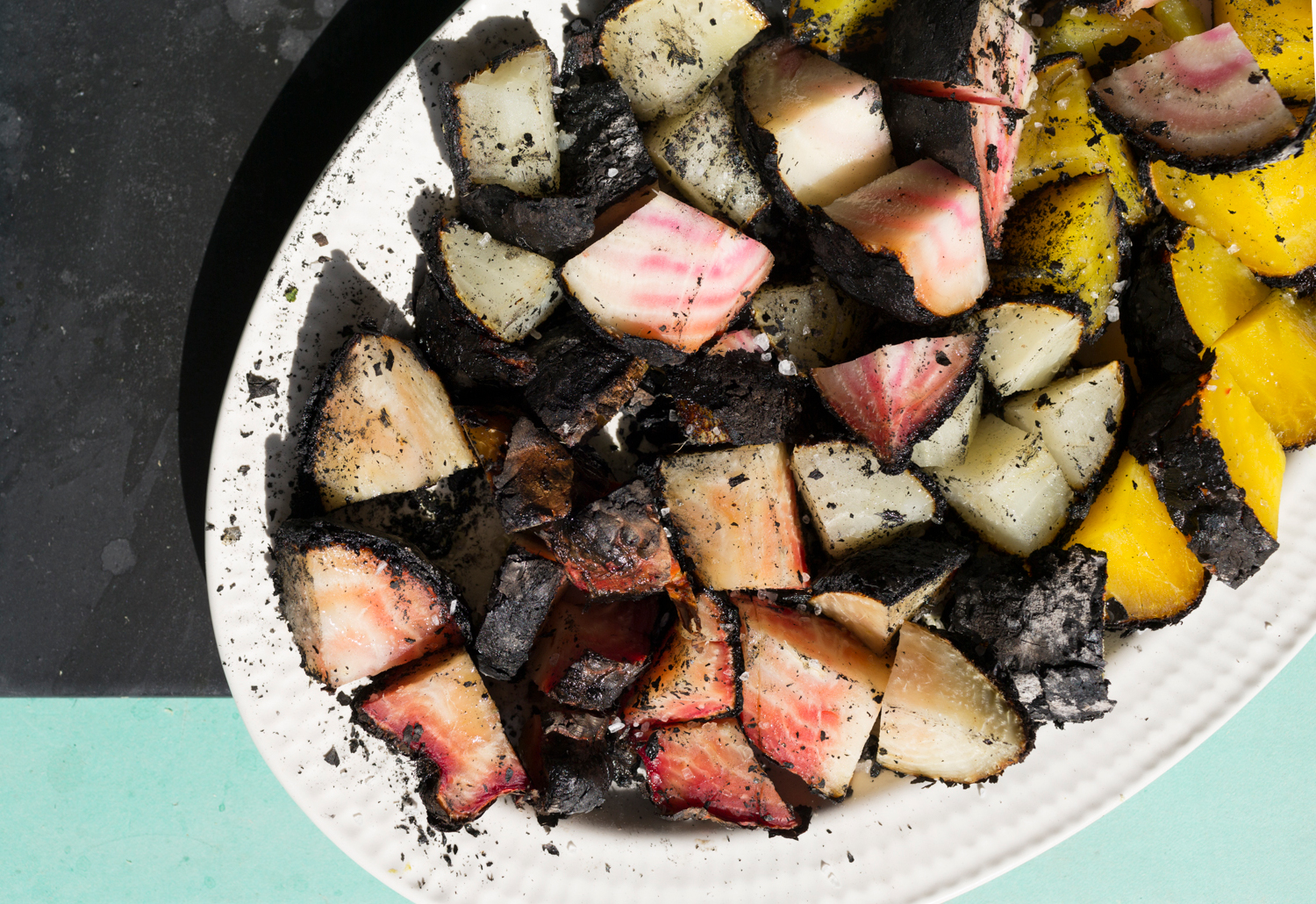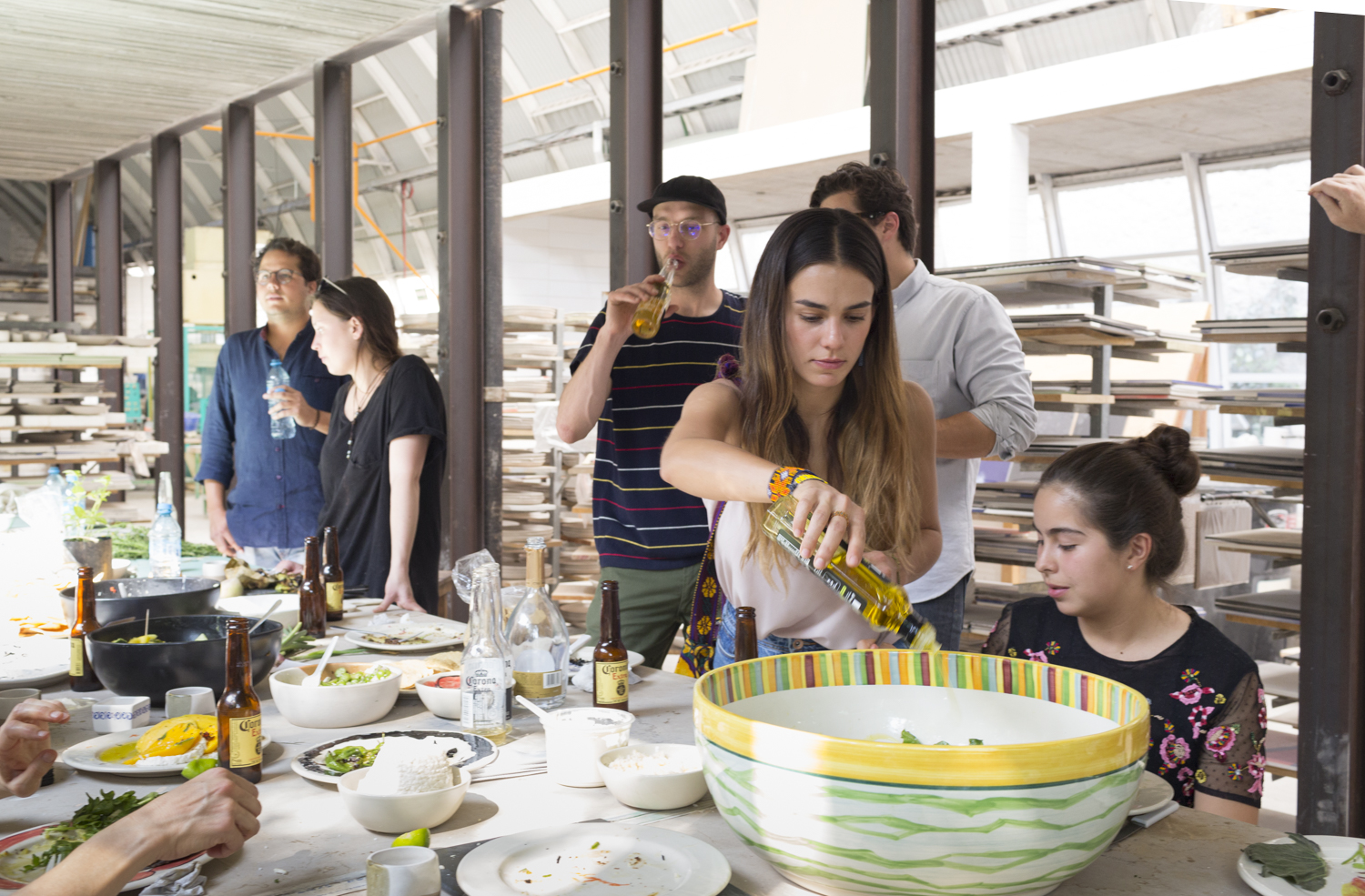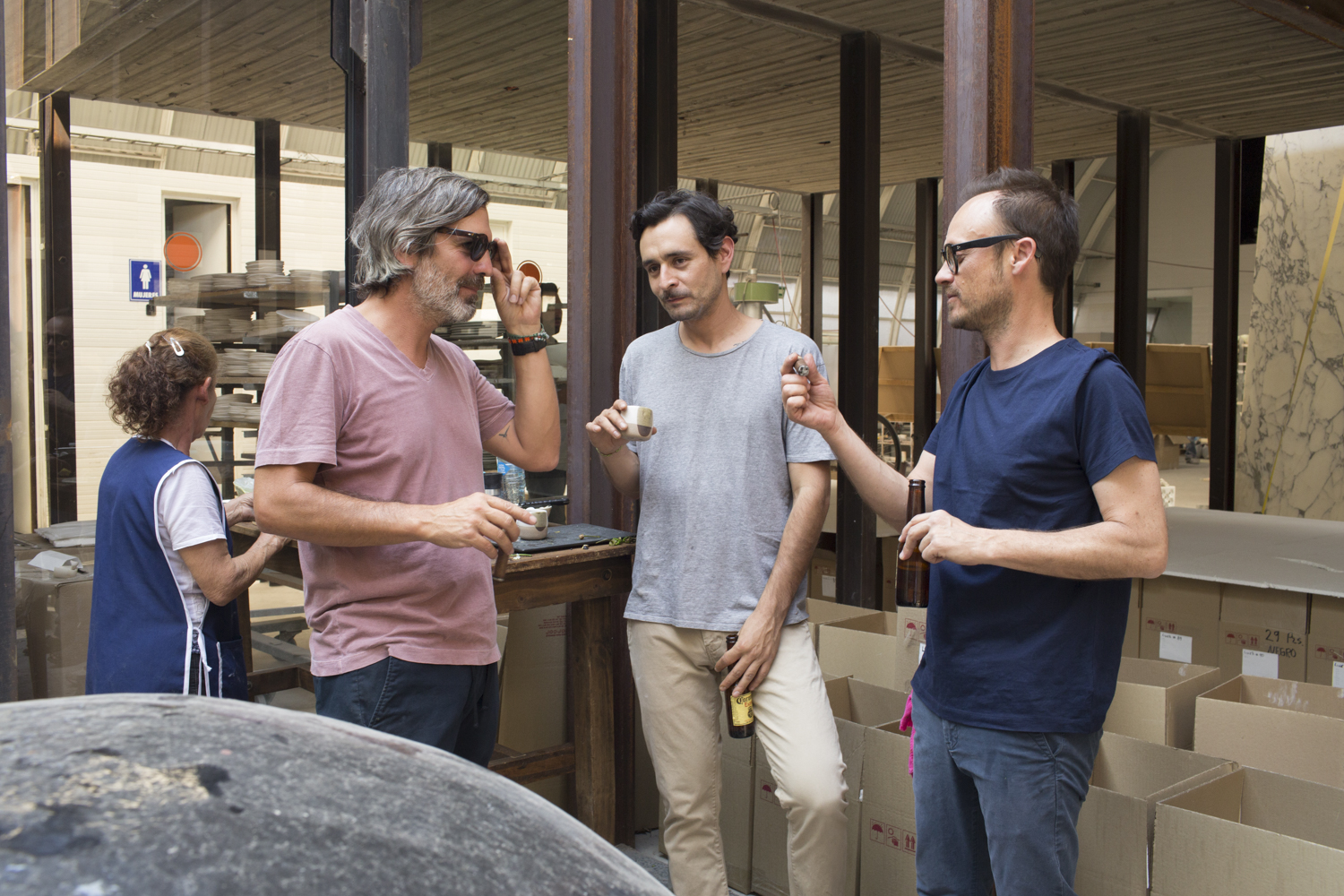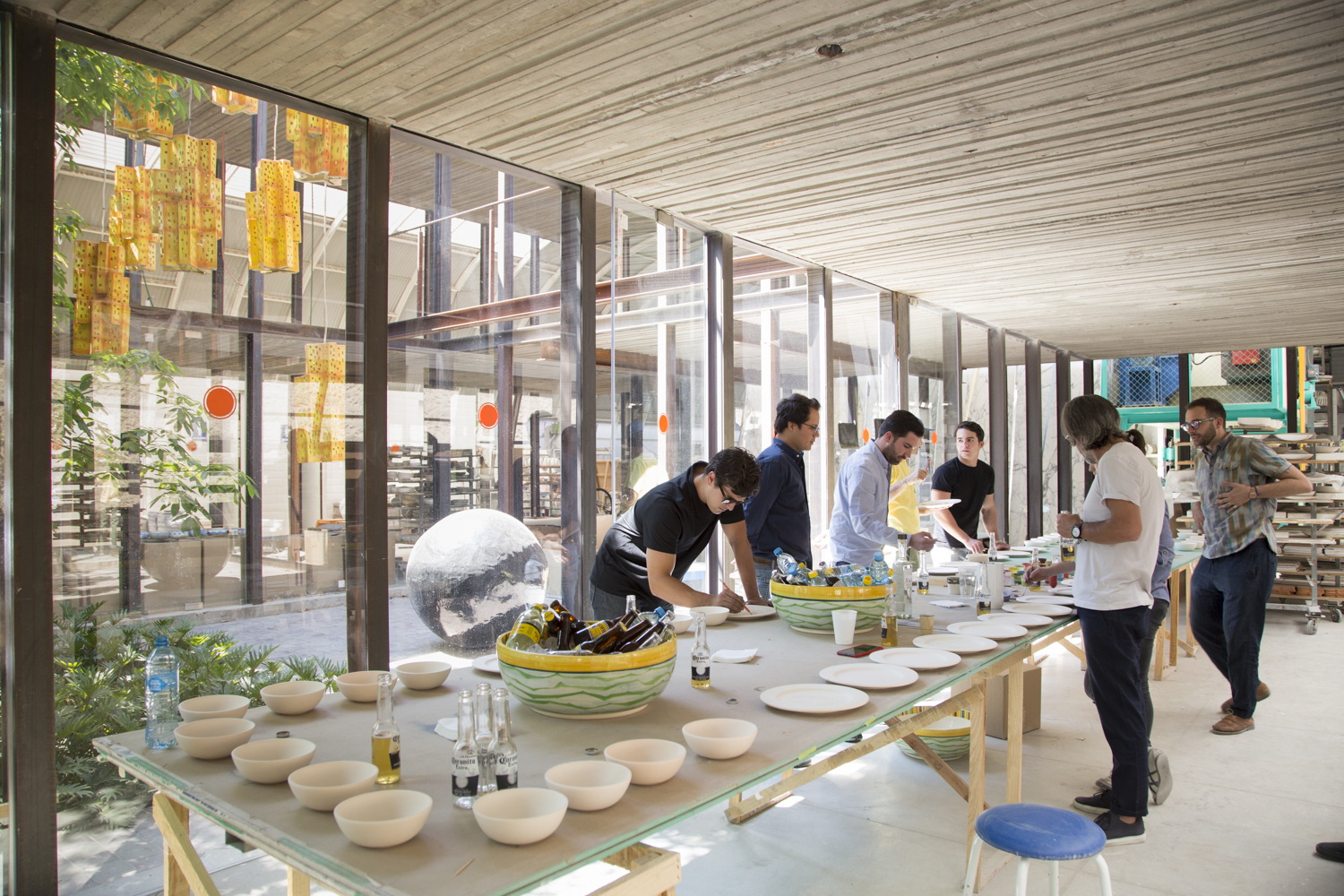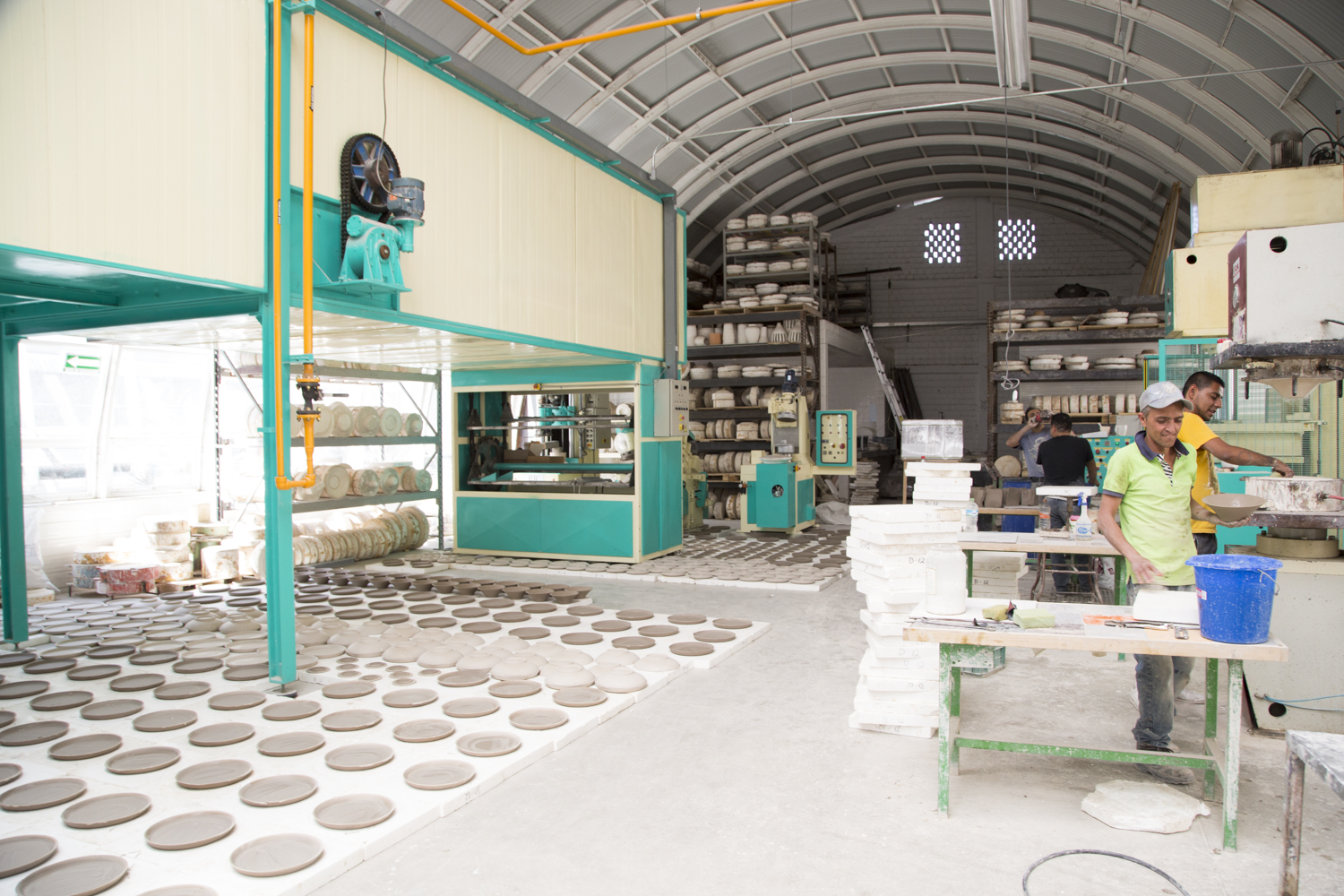Cooking at Ceramica Suro in Guadalajara
Coal-Charred Beets with Olive Oil and Salt
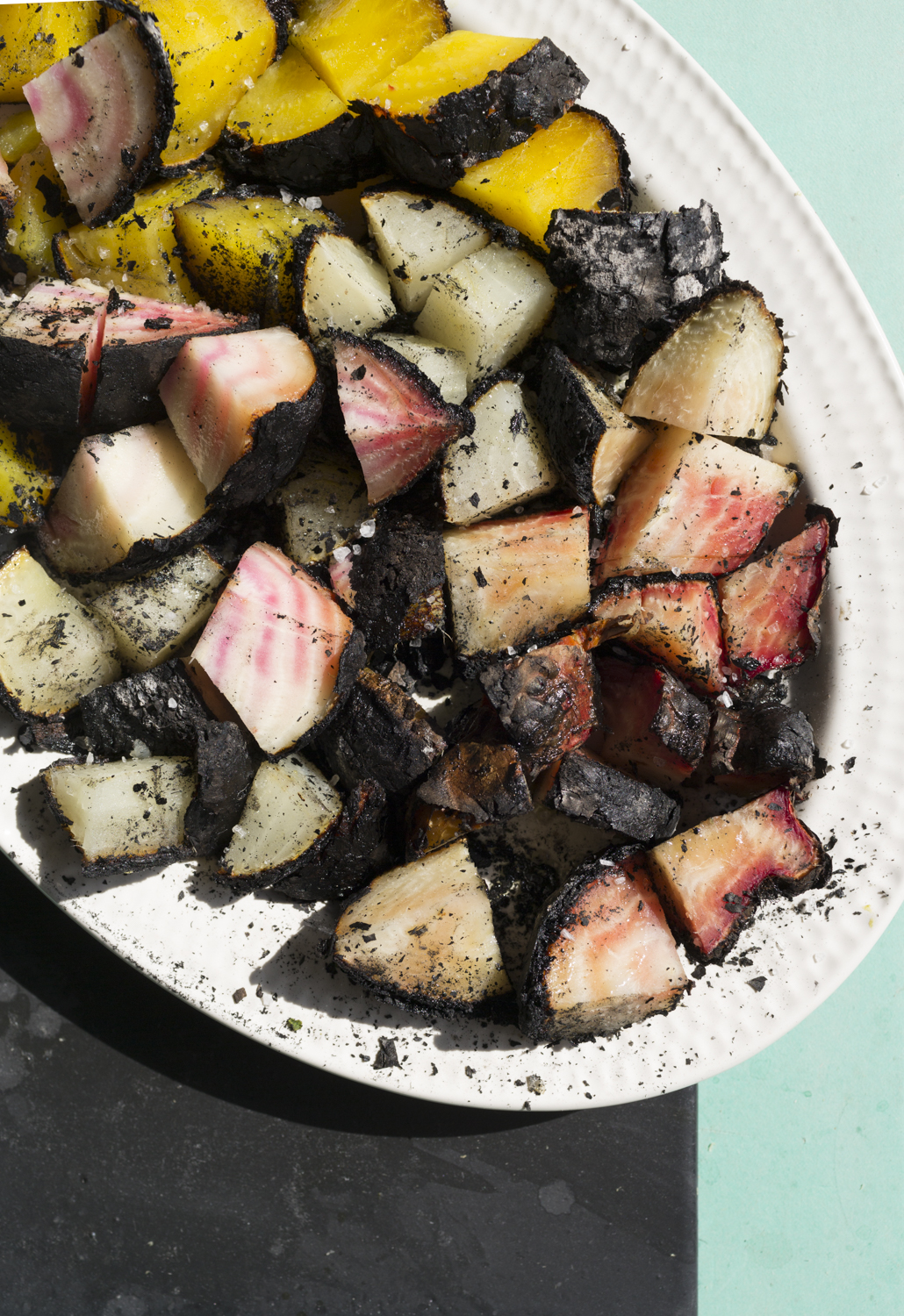
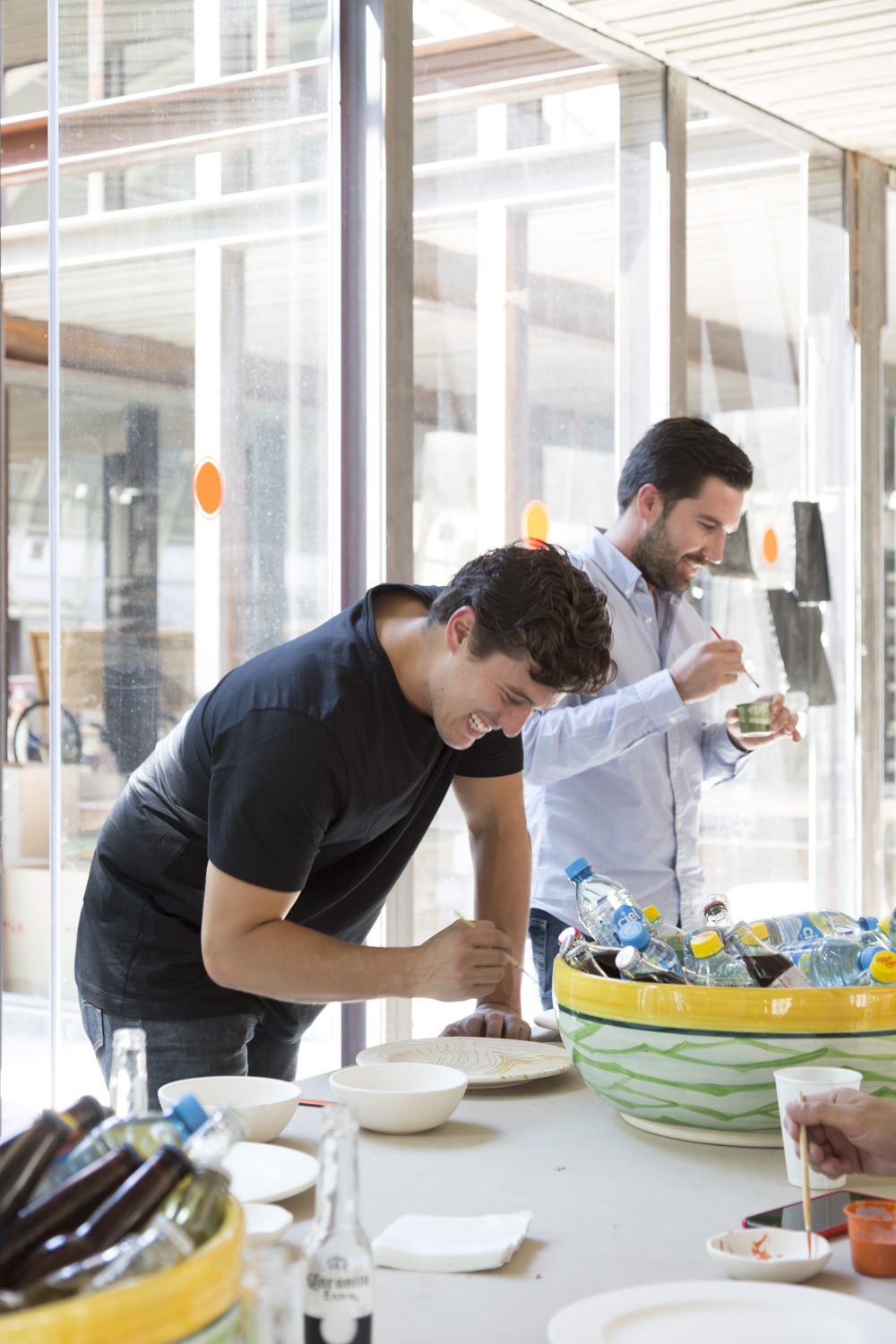
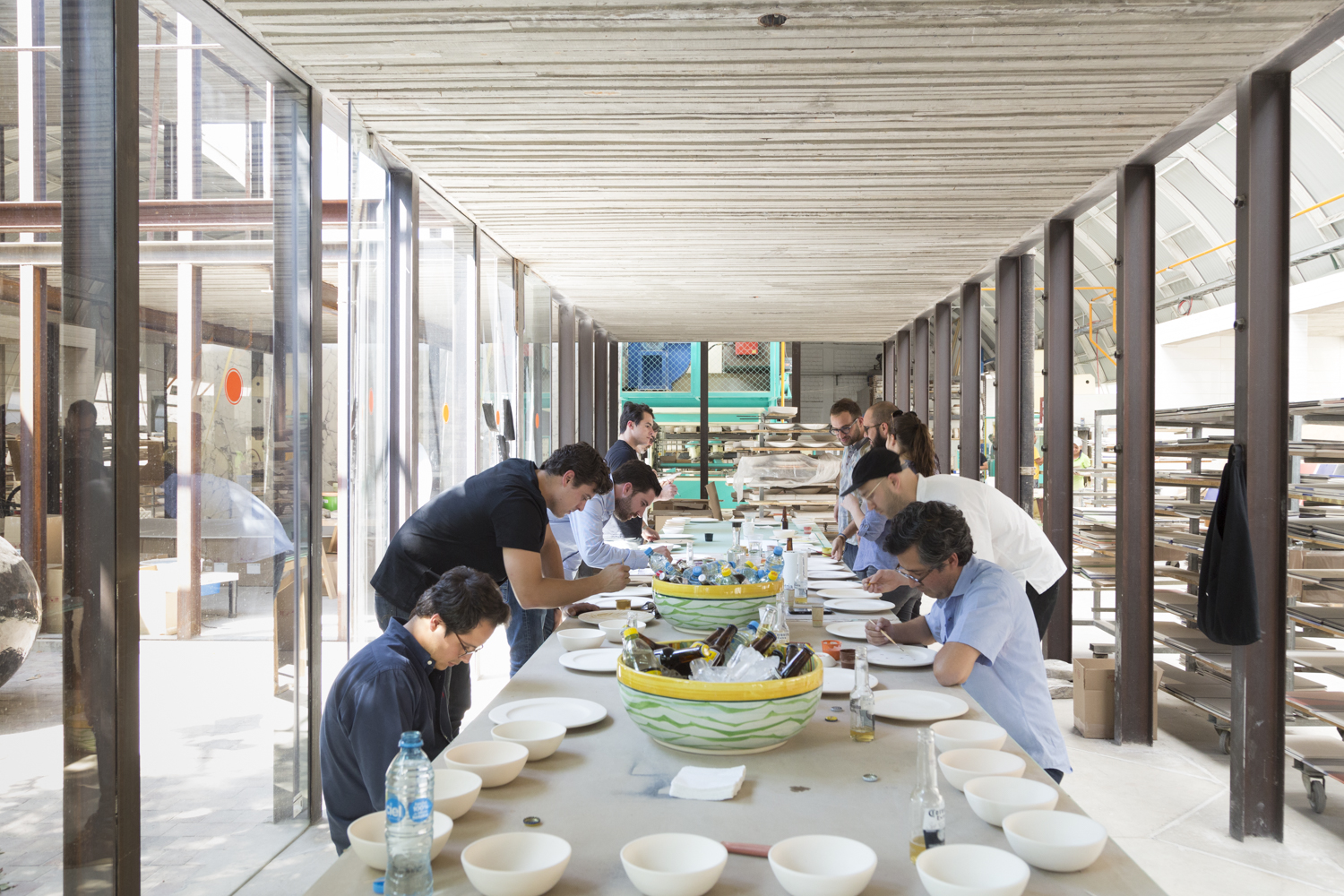
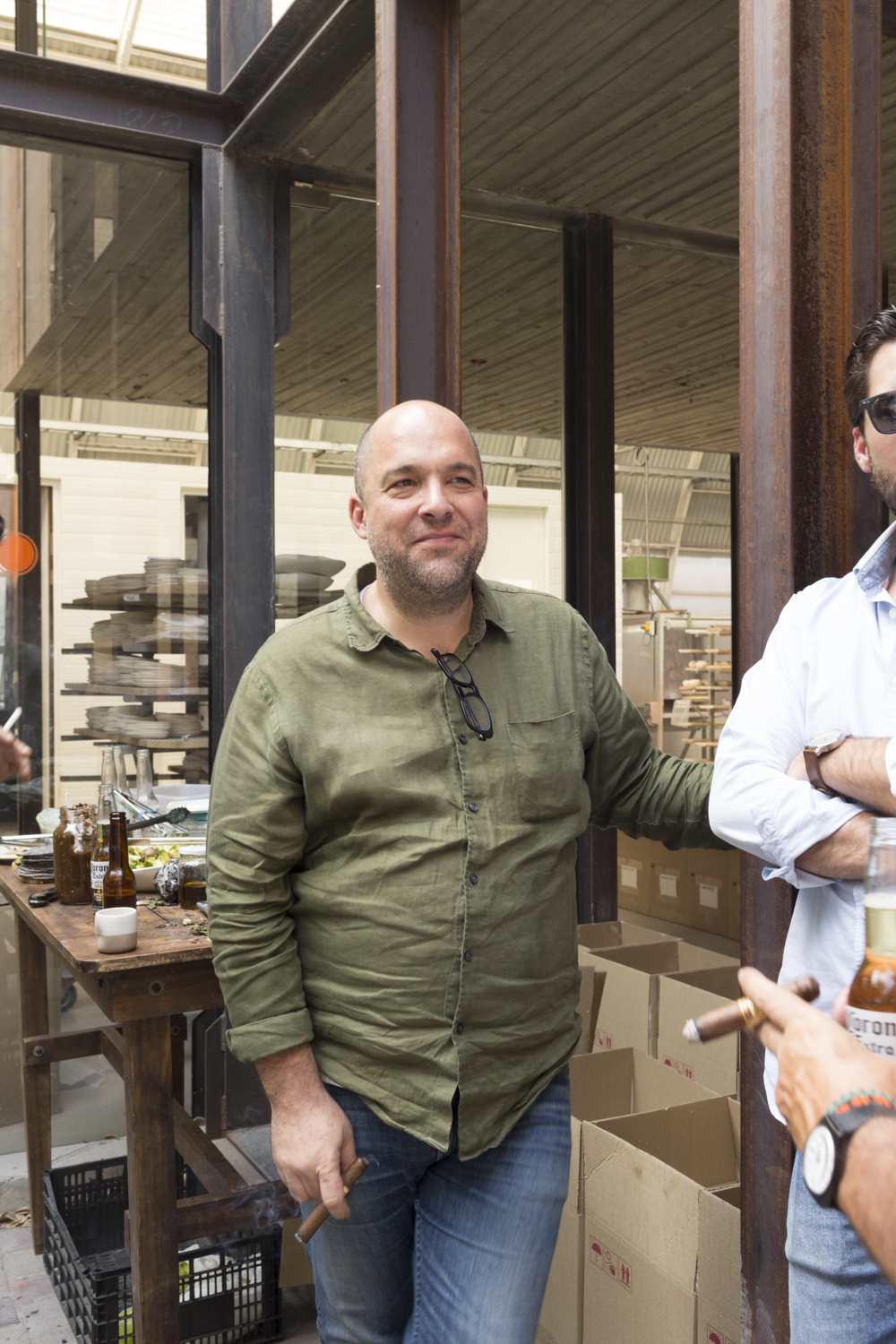
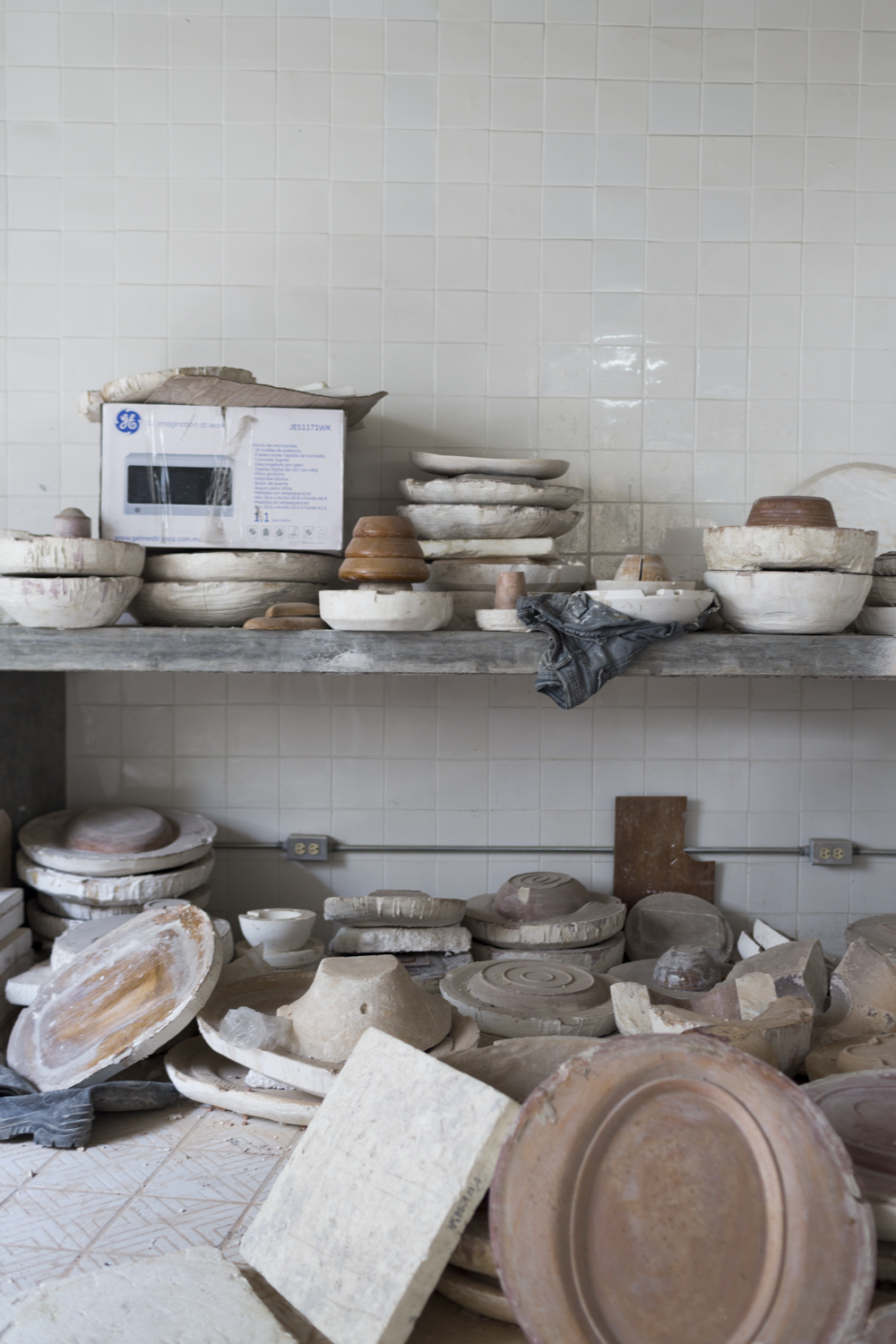
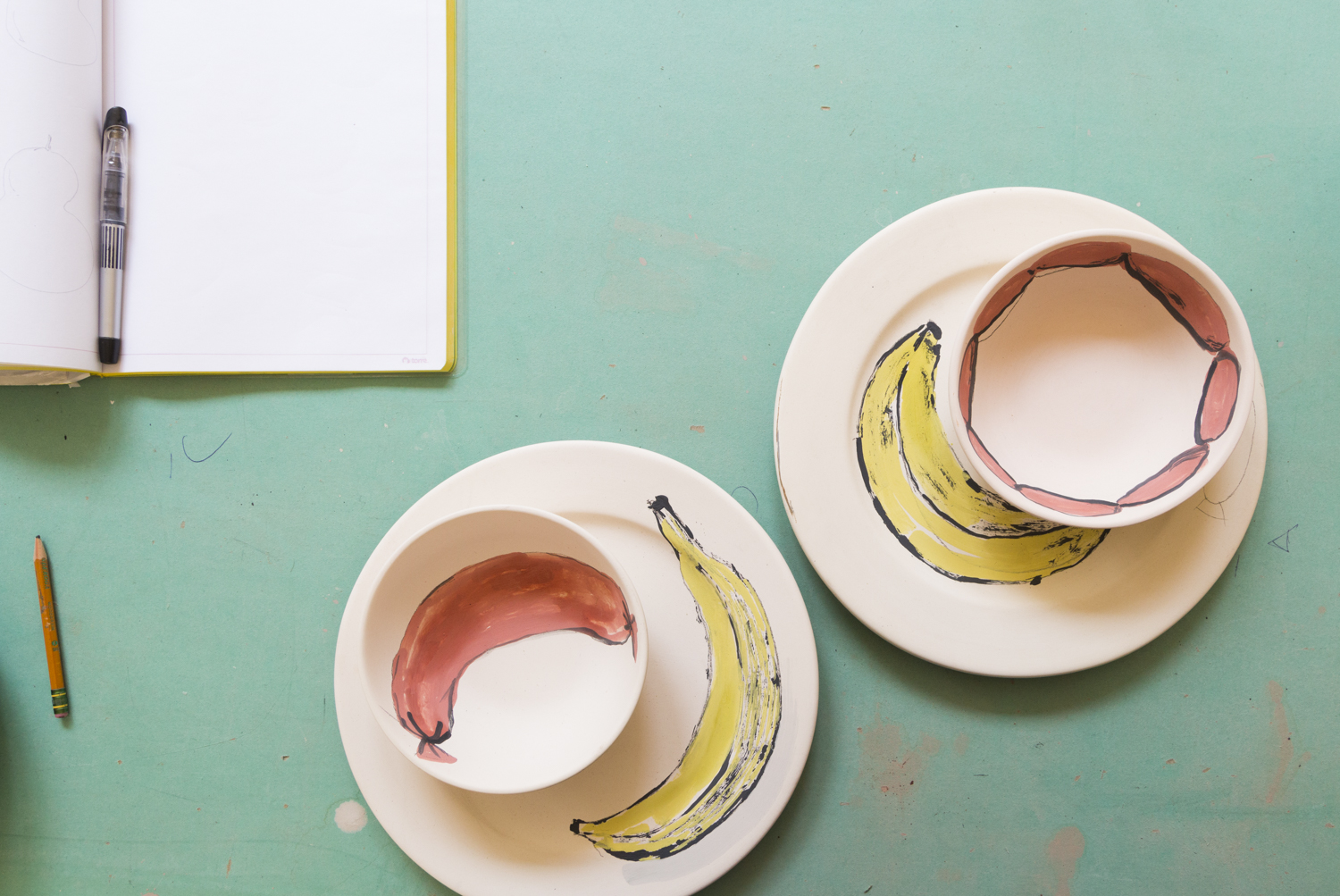
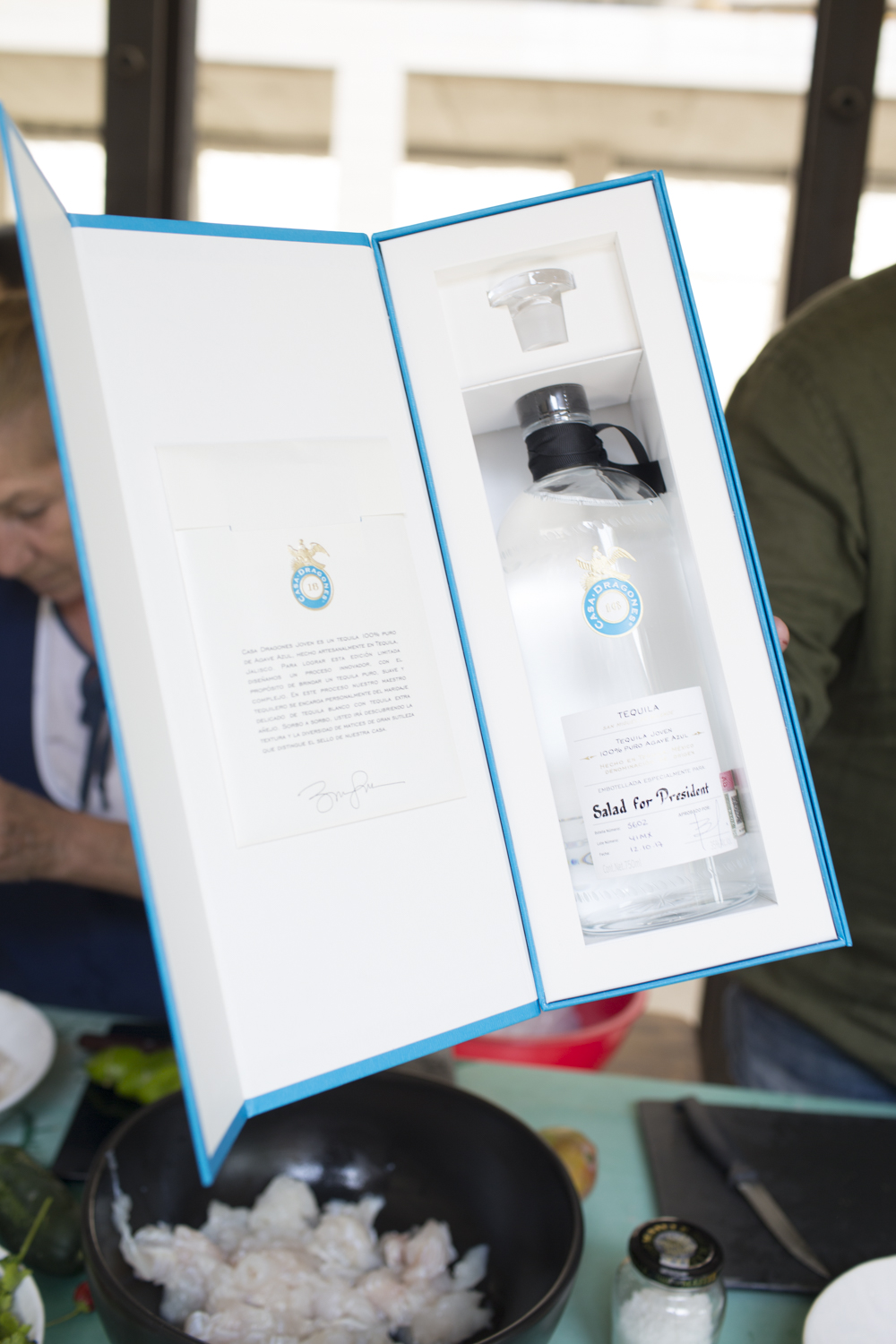
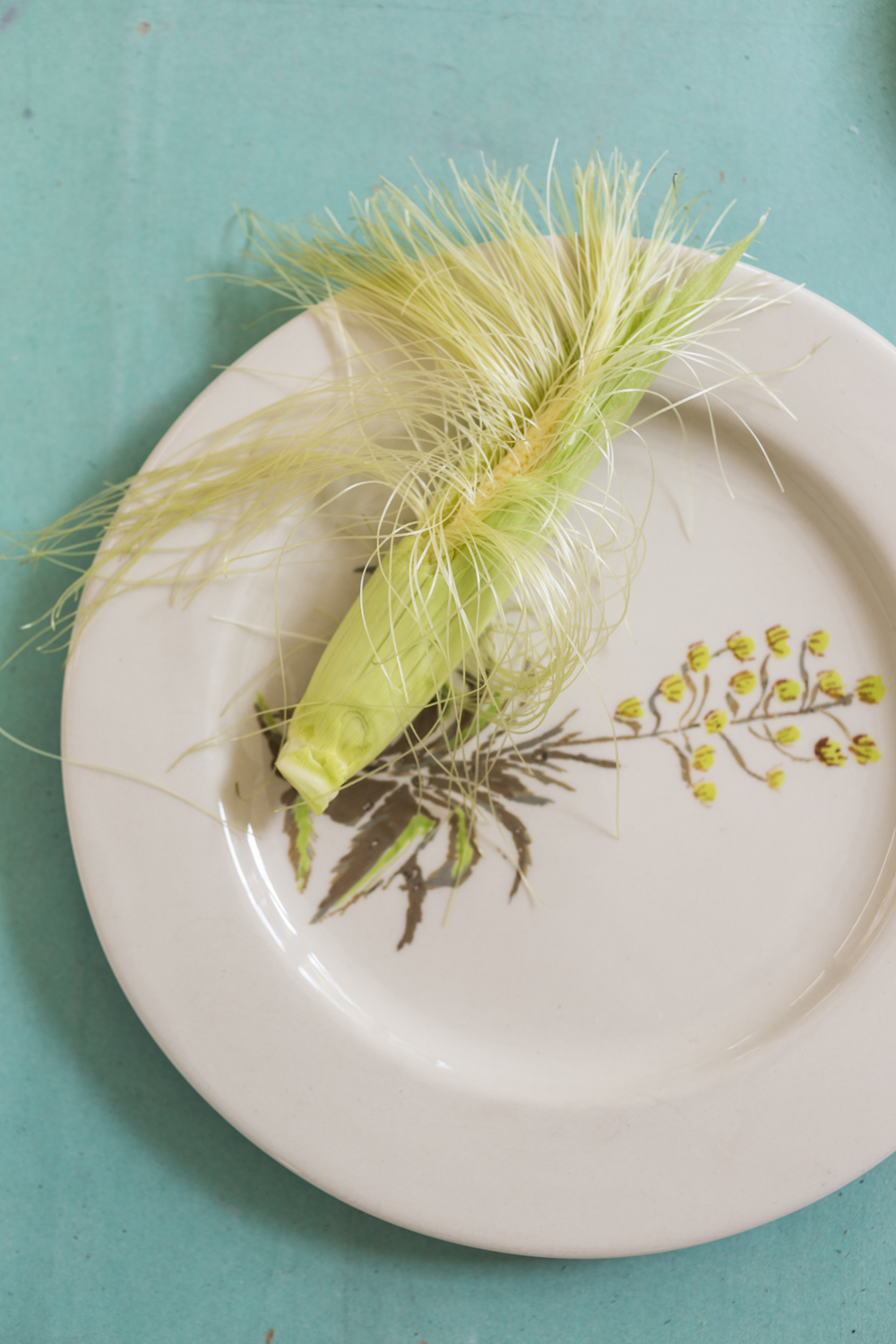
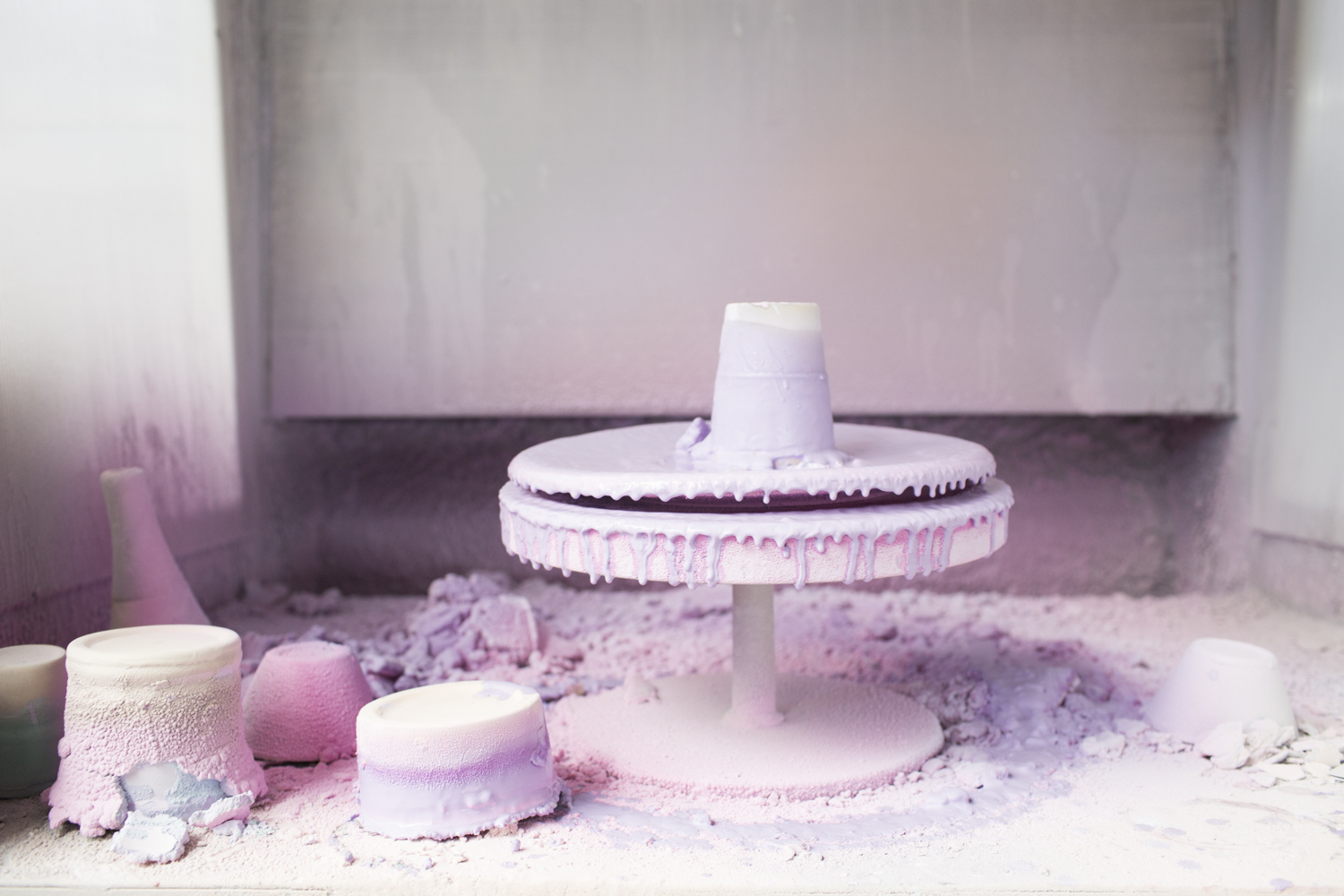
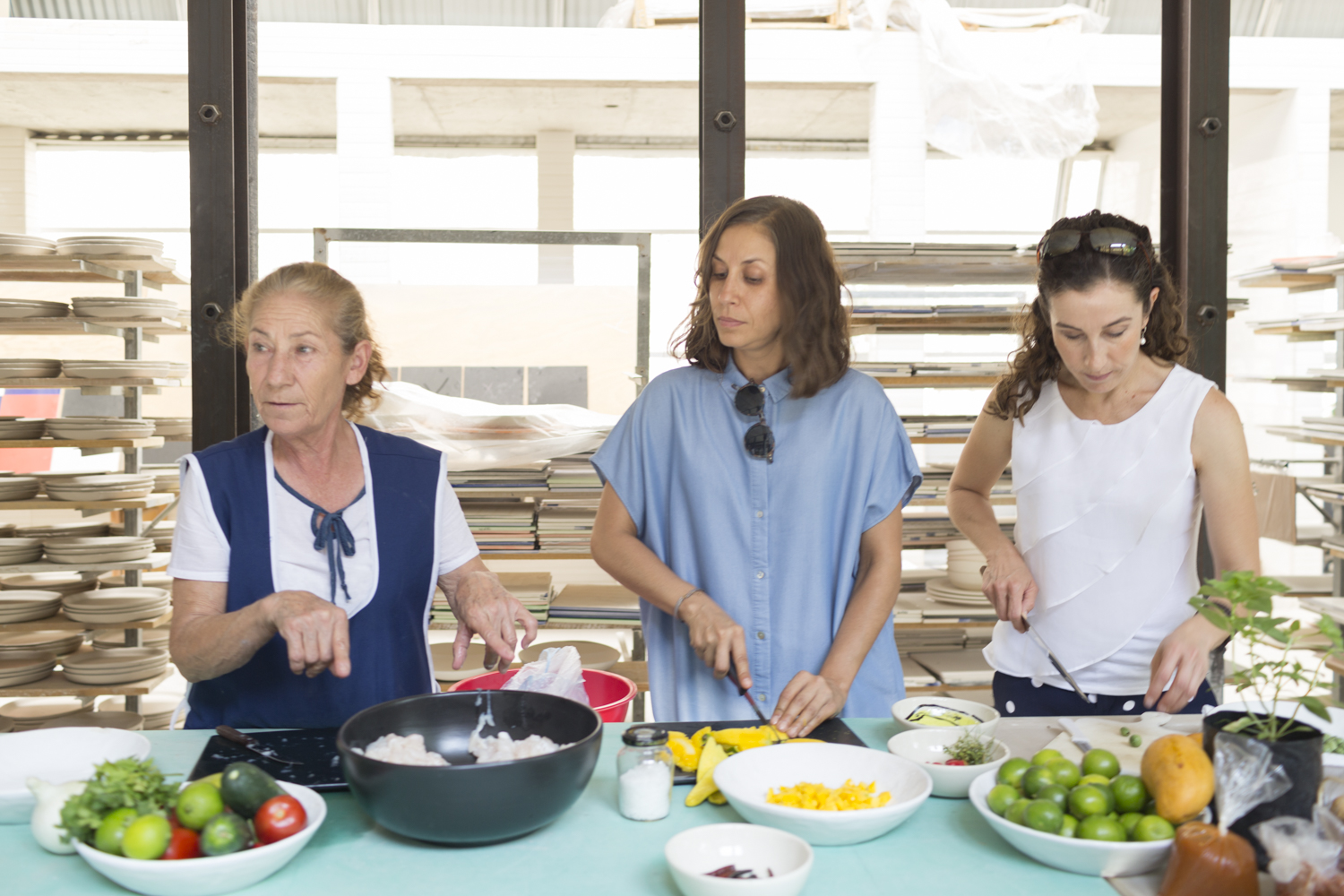
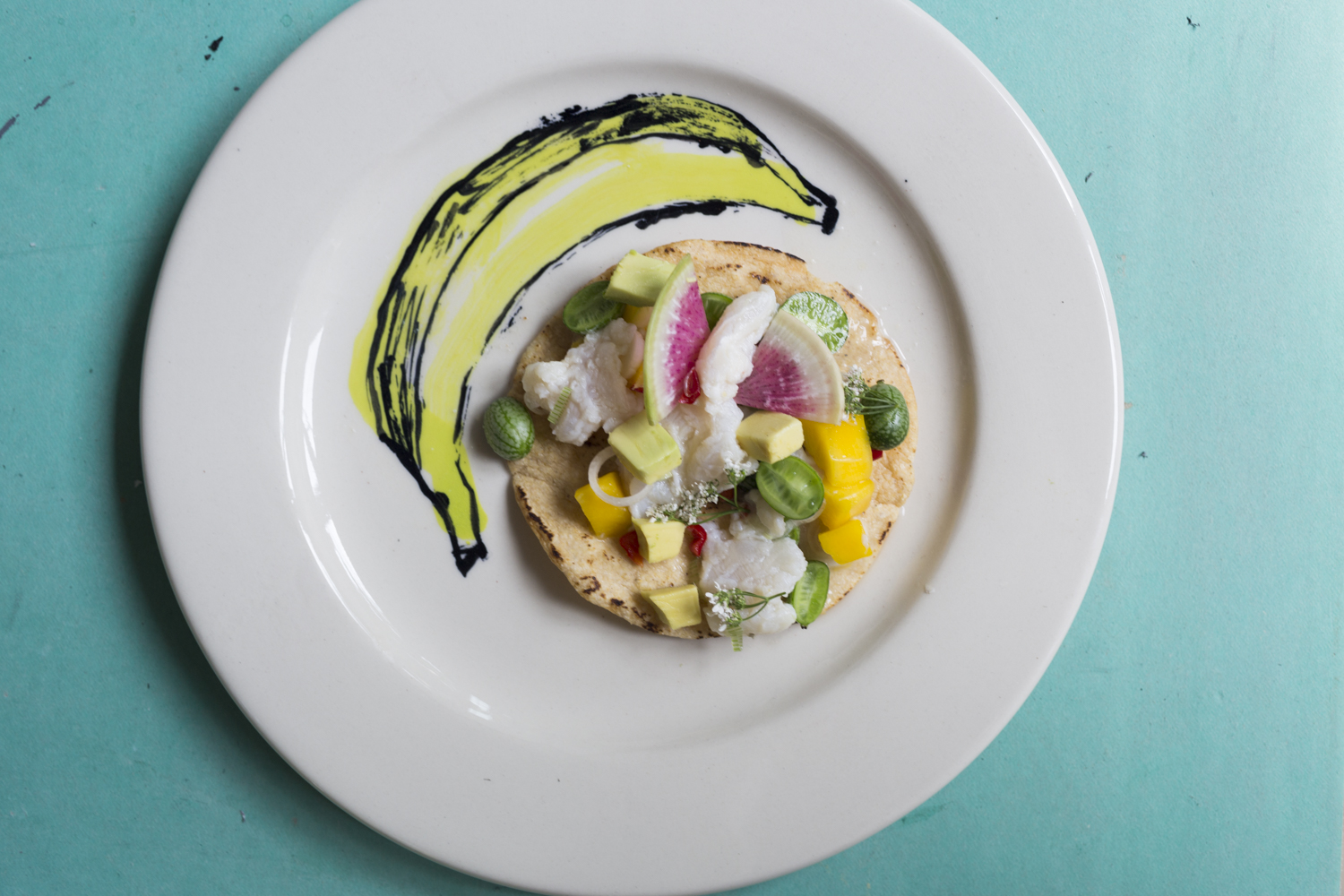
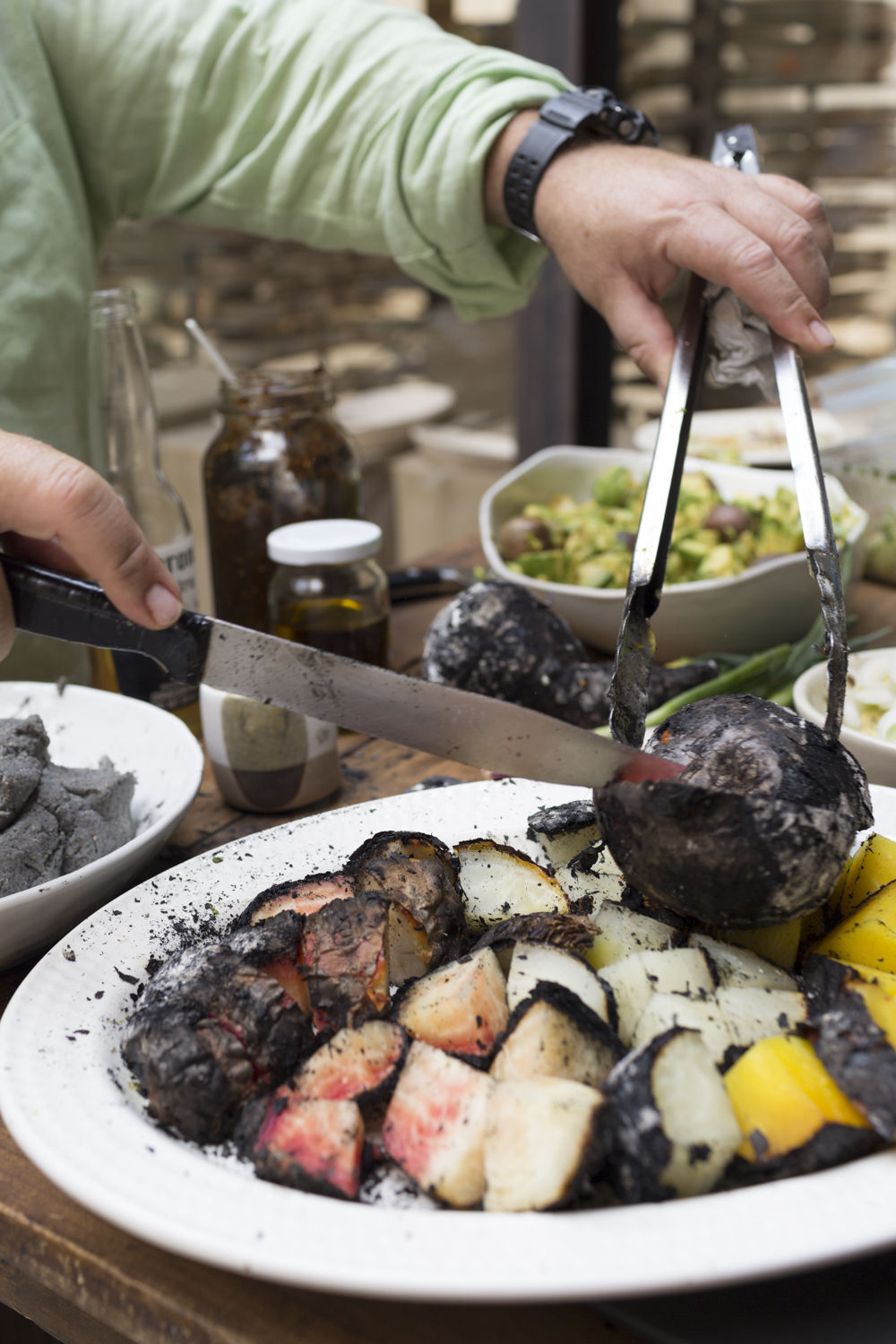
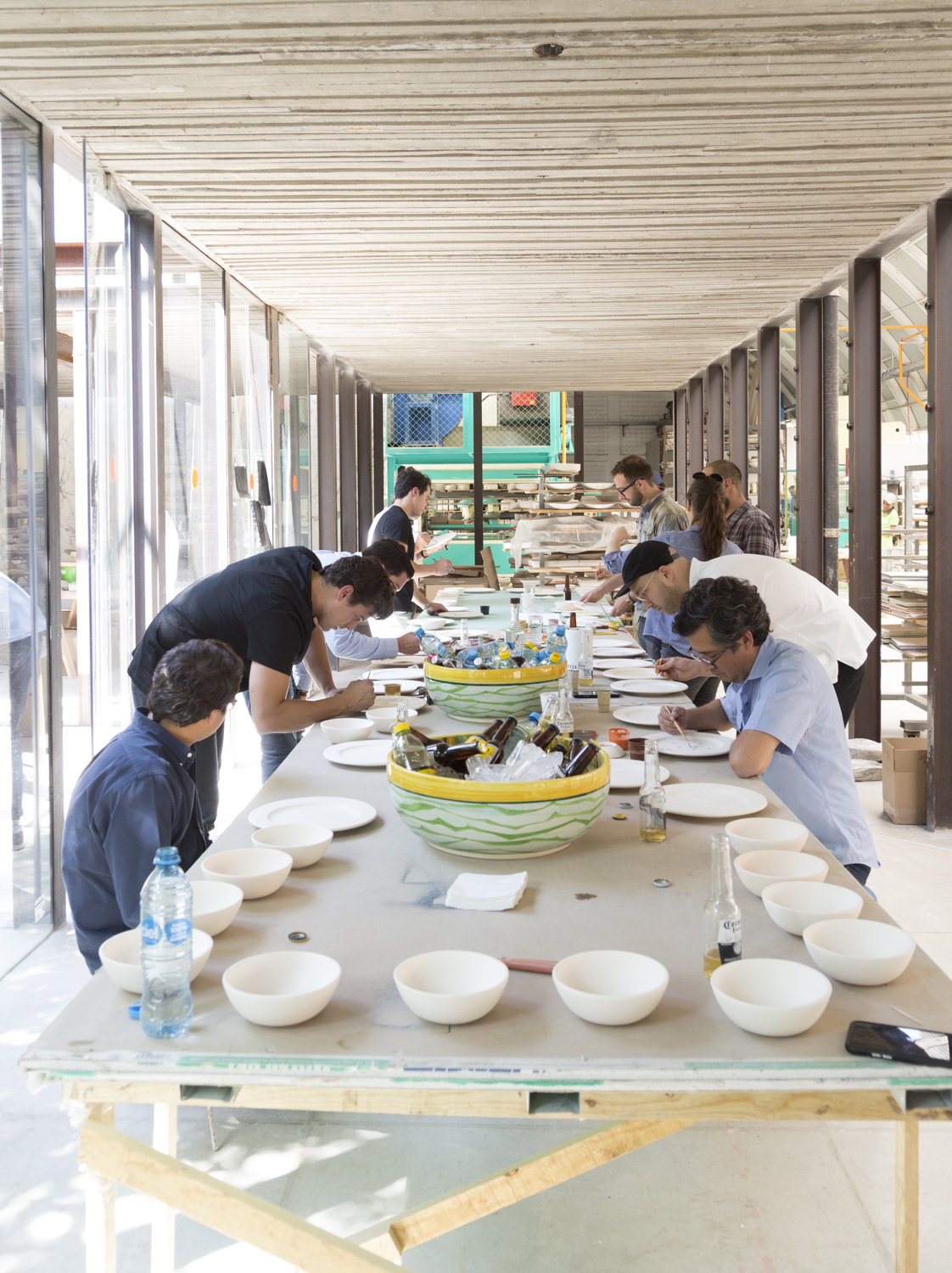
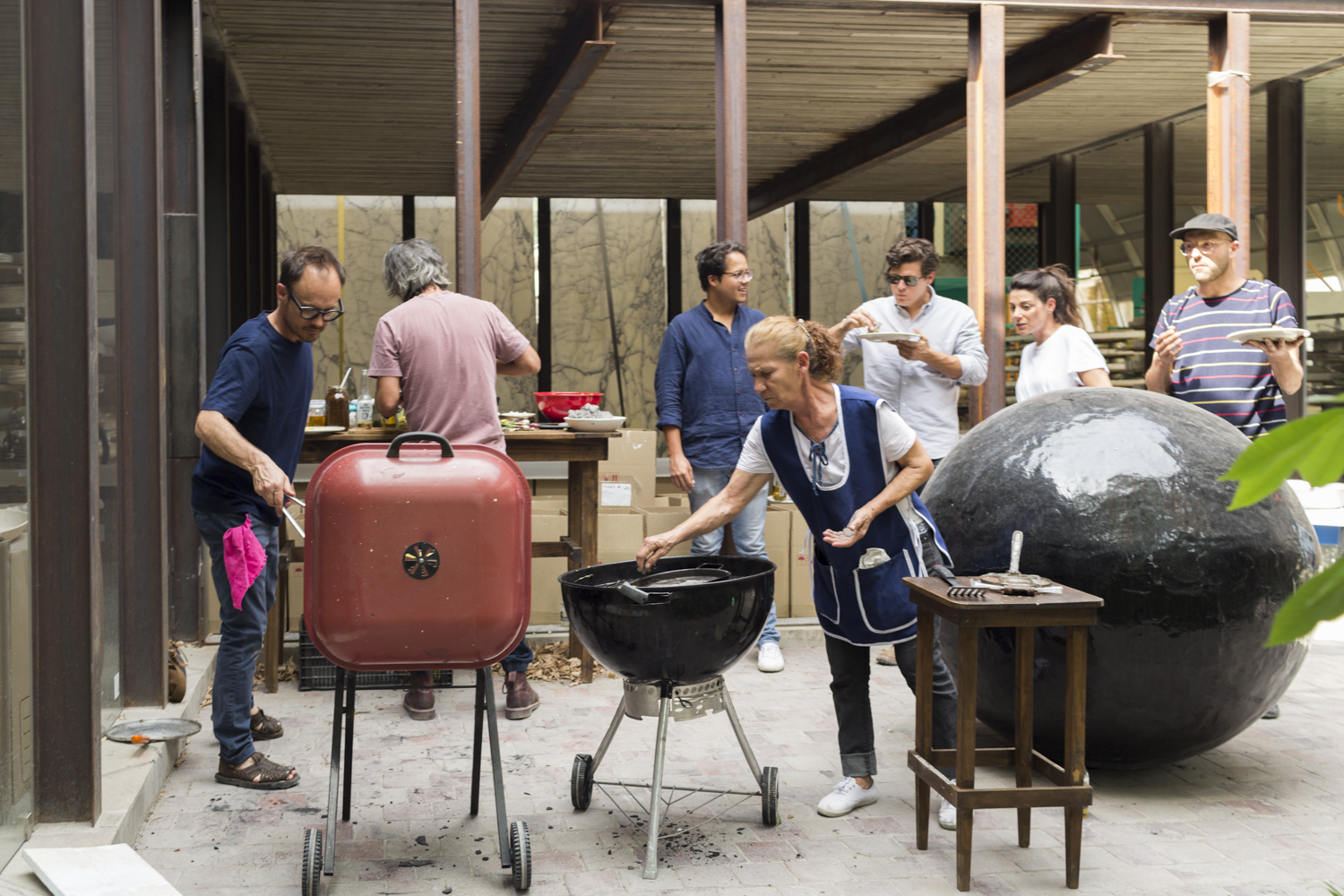
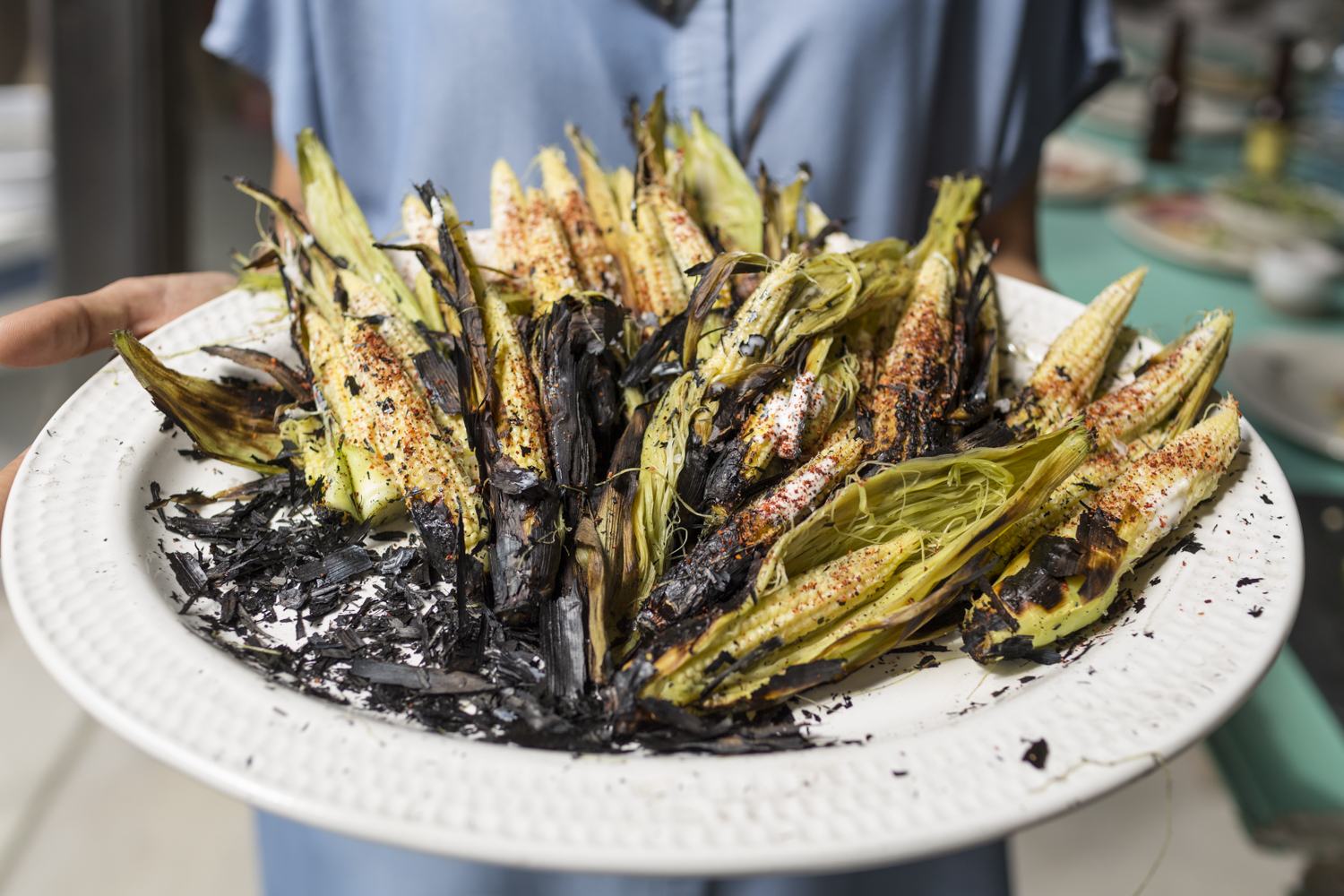
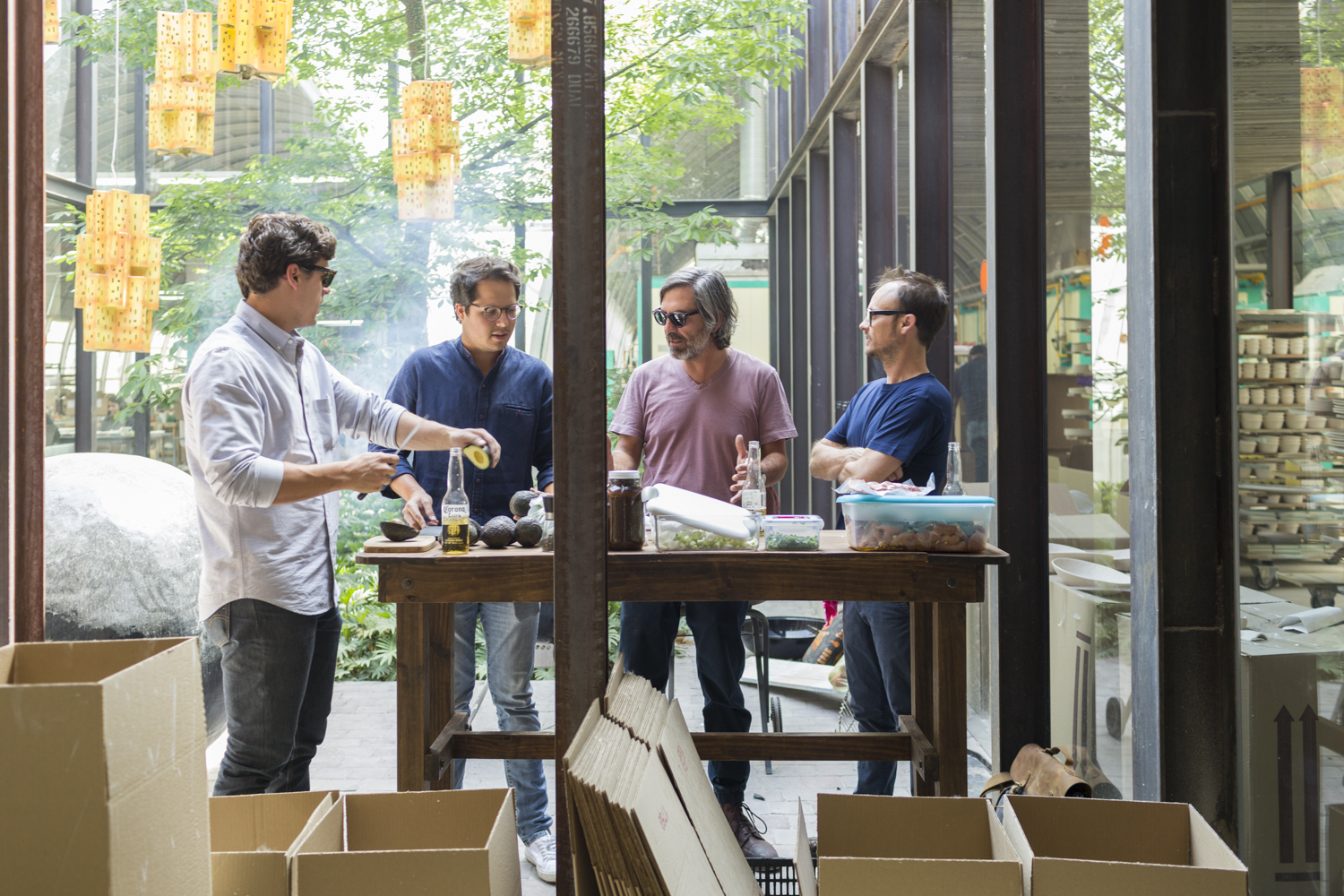
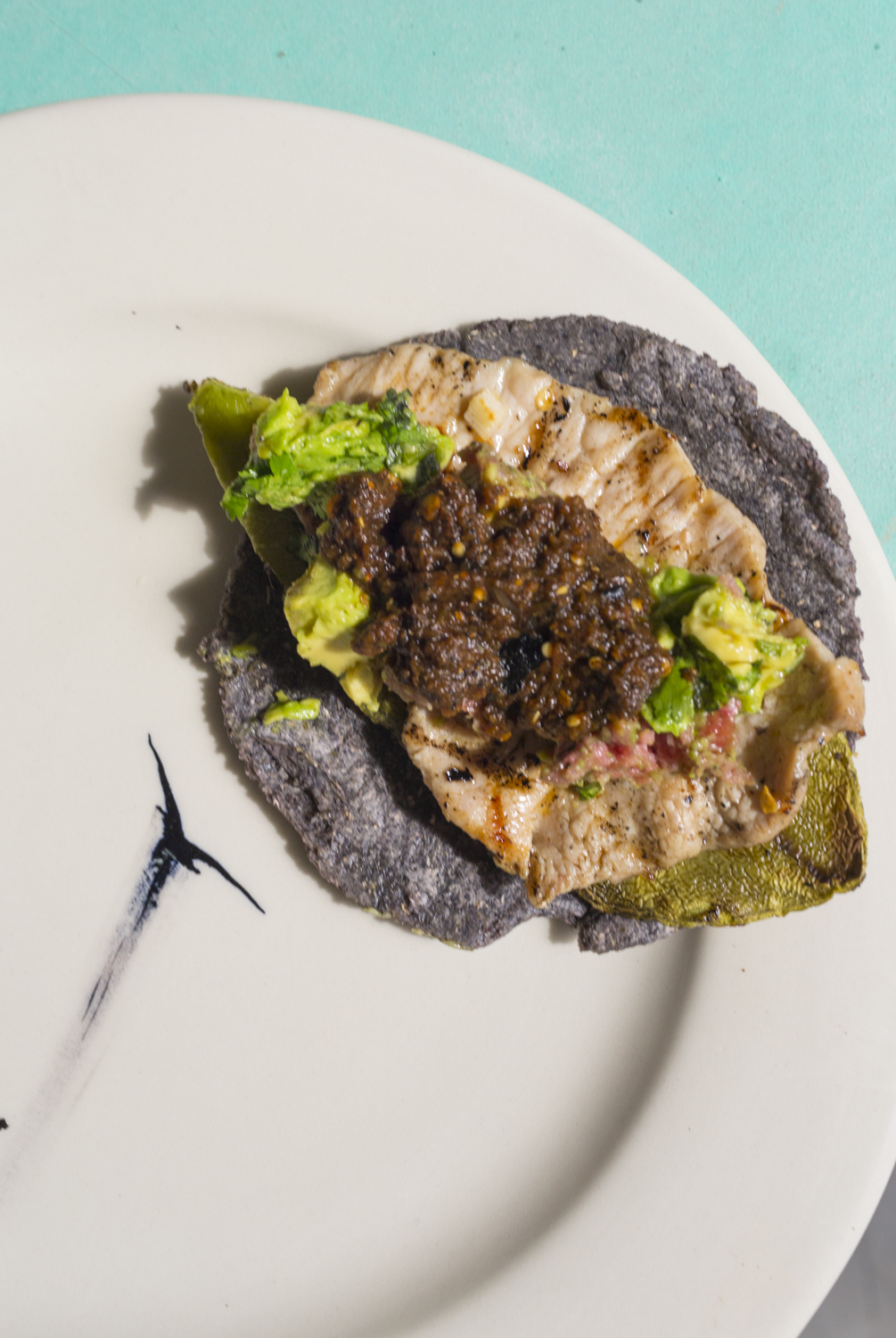
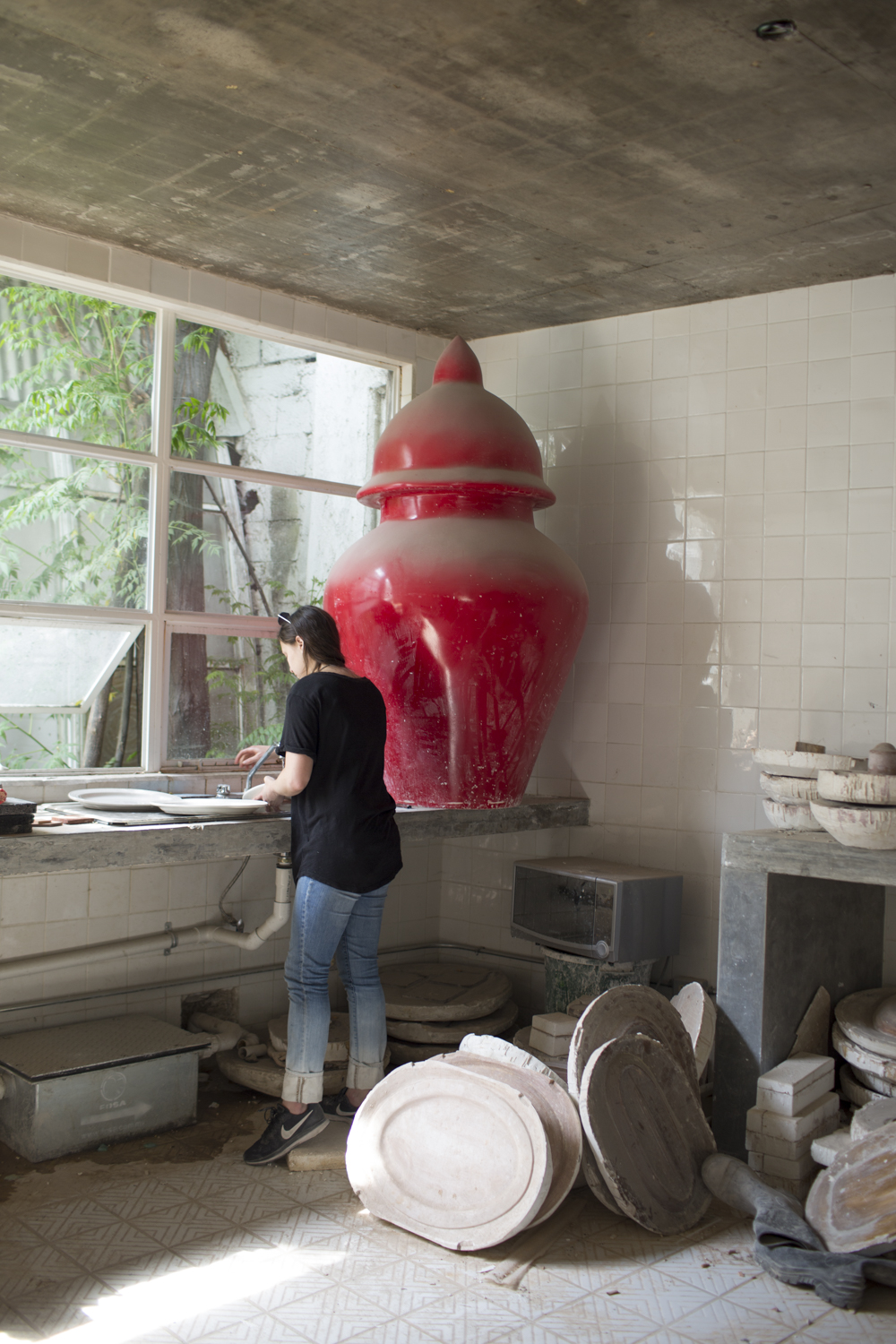
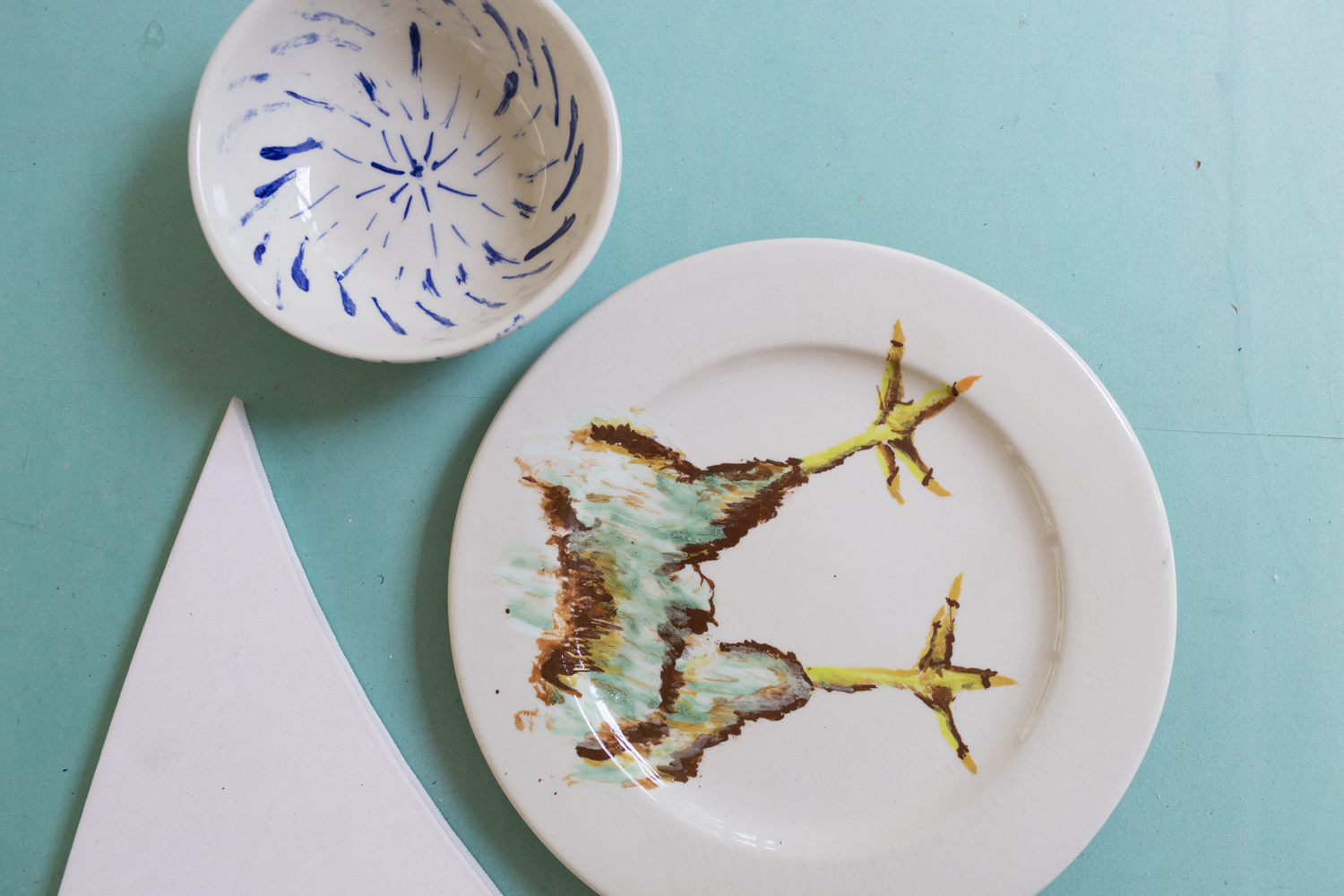
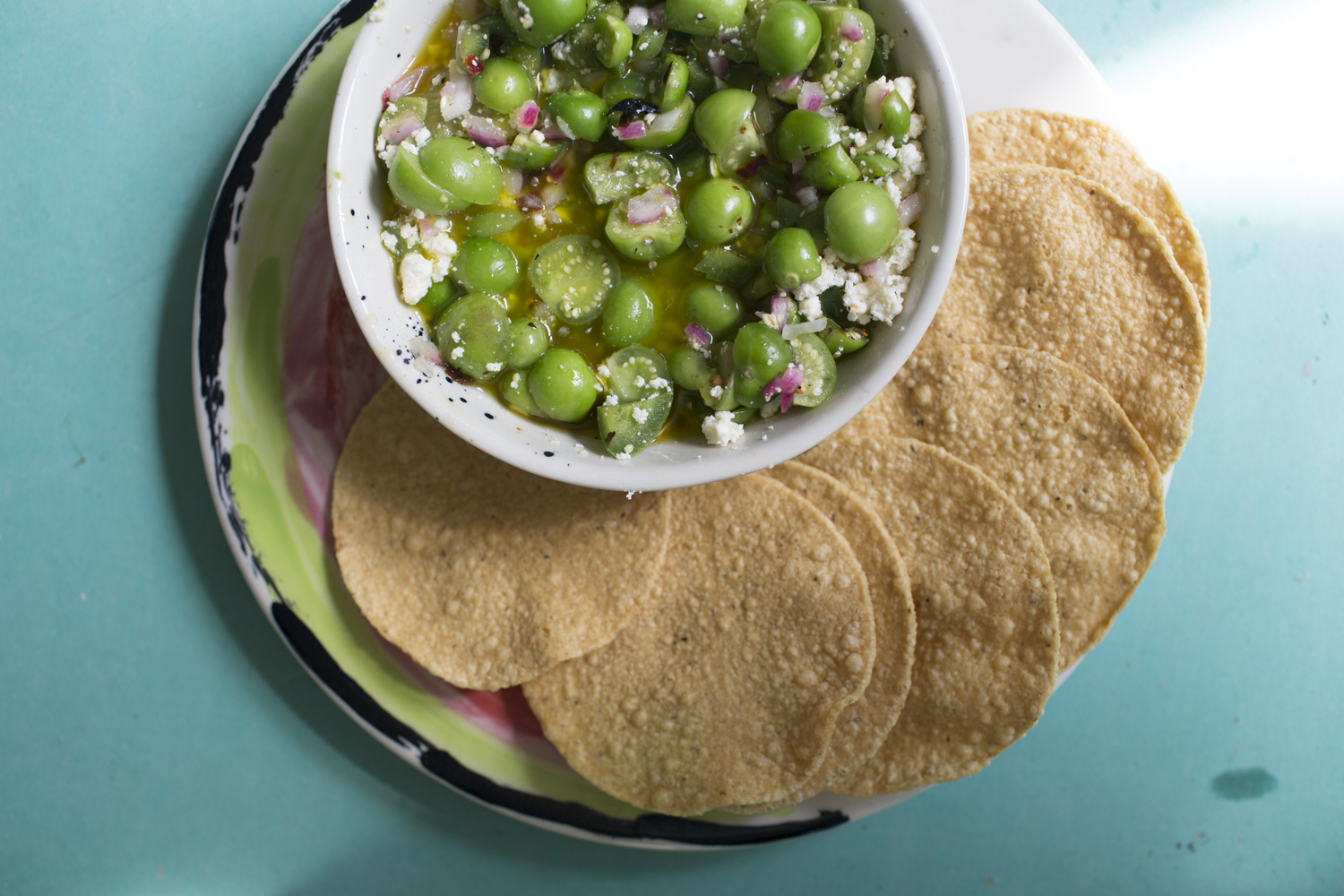
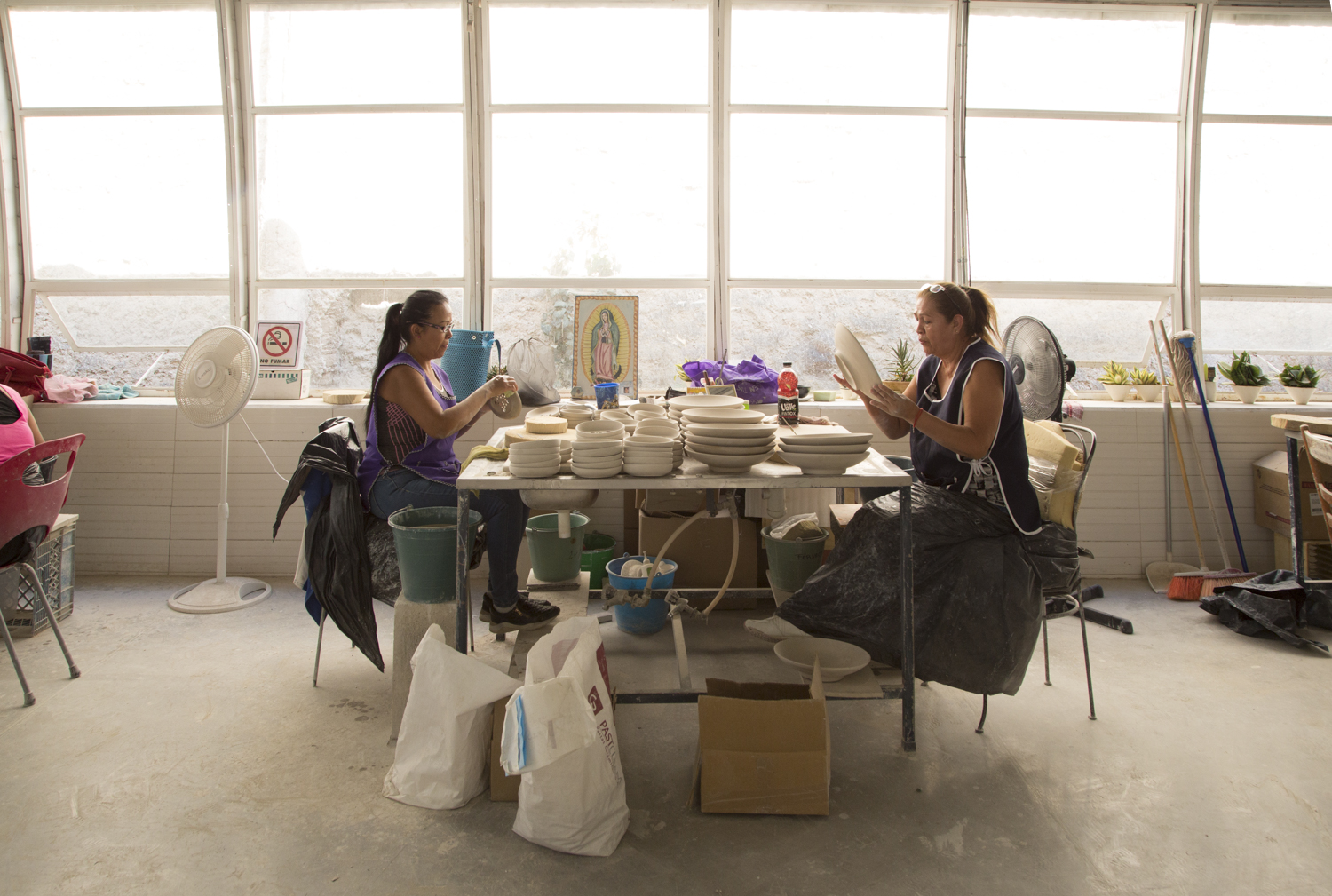
NOTES
This recipe couldn’t be more straight-forward. We didn’t even add acid to the dish, just olive oil and salt. Alvaro brought us the very best beets on earth — white, candy colored, red and yellow. The color variety and superior quality is crucial in a dish as simple as this, so don’t skimp! Head the farmers market and get the good stuff.
RECIPE
DIFFICULTY
EASY
SERVES
8
PREP TIME
5 MINS
Beets
-
4lbmixed colored beets
-
olive oil
-
salt
INGREDIENTS
- beet
I planned my trip to Guadalajara trip on a whim, heeding rumblings and whispers in my orbit. In the central state of Jalisco, Guadalajara is the country’s second largest metropolitan center, with more than 4 million people and 8 districts, but it is still a city artist Gabriel Rico described as, “the B-Sides of Mexico City.” This is not a place that reveals itself immediately, but there is a world of delicious food and art to be consumed if you know where to look. And, if you’re anything like me, travel is always more rewarding when there’s a little bit of discovery involved. I am here hoping to capture new stories and recipes for a new cookbook. I quickly learned that if you are looking to do anything involving food or art in this town, all roads lead to one man: José Noe Suro.
I knew I was in the right place when I realized Guadalajara’s head honcho deals in clay. Guadalajara is famous for its ceramic industry, and Suro is the owner of Ceramica Suro, a third-generation factory that creates custom tiles and serving ware for restaurants, private clients, and hotels around the world. But the beating heart of the operation lies in its fine art sculpture fabrication. Suro is himself an art collector, a gallery owner, and restaurateur, and it quickly became apparent that he is a vital force for the thriving community of contemporary artists in this city. He enables their projects, creating artist’s editions and producing ambitious installations, sculptures, and international commissions, but more than that, he is a father figure.
A few days before I arrive, Suro sends me a text that reads, “Come to the factory on Friday. We will invite artists and designers to paint plates, we can fire them, and then cook and eat off of them on Monday.” This sounded like a dream of a plan. Arriving at the factory on Friday afternoon, Suro is nowhere to be found (there are rumors of a last-minute trip to Dallas, or Mexico City, but it’s unclear). Instead, I am greeted by 15 of Guadalajara’s most handsome artists, designers, and architects. They are gathered around a long table in the center of the luminescent factory, where a stack of unfired plates sit waiting to be adorned. Tequila is poured, and paintbrushes are wielded freely. Designer Fabien Capello paints poppy bananas around the rim of a dinner plate. Gonzalo Libreja fashions the silhouette of a wispy bird in flight at the center of one dish, and proudly shows me its “shit,” artfully splattered at the bottom of an accompanying soup bowl. It’s a welcome improvisation, and a fast introduction to this crew, who would take it upon themselves to guide me through the coming days.
Following the glazing party, a stream of DMs appear, one by one, from each and every one of my new Guadalajaran friends. Their advice fills my schedule with modernist sculpture parks, murals, and eating and drinking the muy rico Jaliscan faire, from the much-discussed tortas ahogadas, to fresh, funky pulqué. We drive an hour outside of the city to visit the organic farm, X Picy. This family operation run by Alvaro Santoscoy, provides specialty produce to the best restaurants in Mexico, and we are thrilled to have a backstage pass.
But one looming question remains: José Noe, yet to materialize in the flesh, expects us to reconvene at the factory for food and drink on Monday. But nobody knows who is doing the cooking, or how. Architects Polo Orendain and Andrés Mayorga, who designed the factory, assure me that there is nothing reassembling a kitchen on-site. The gentlemen that they are, they offer to haul a grill to the party. The studio manager, Renata, assures me we can use tile as cutting boards, and she can bring a knife. We are in business.
With cooking tools and methods settled, the food comes naturally. On Monday afternoon, everyone shows up with ingredients, and cooks as they arrive. Gabriel Rico works with Goyita, the factory’s housekeeper, to make an experimental ceviche with mango and Mexican gherkins that look like miniature watermelons. Alvaro arrives dragging a 5’ wide styrofoam cooler filled with delicacies like fresh baby corn that we char, slather with crema from Virginia Jauregui’s family dairy, and season with tajin and lime. He throws beets of every color of the rainbow directly into the white-hot coals of the BBQ, charring their skins and cooking them inside to perfection. The food proves to be the best I eat in my three-week Mexican adventure.
At the final hour, Suro appears with a bottle of Casa Dragones tequila with “Salad for President” in calligraphy on the label. It’s in that moment that I realize he is my entertaining hero, able to set a once in a lifetime travel experience in motion without anyone even knowing where he is. It was a magic trick I aspire to myself: the ability to effortlessly open up a world to a complete stranger, revealing the best of a city and its culture. No, I can’t give you his number, but lucky for you, I took detailed notes. Follow the guide below, and you’ll surely experience Guadalajara like an insider.
My complete travel guide to Guadlajara was published in Vogue. Click here for more.
